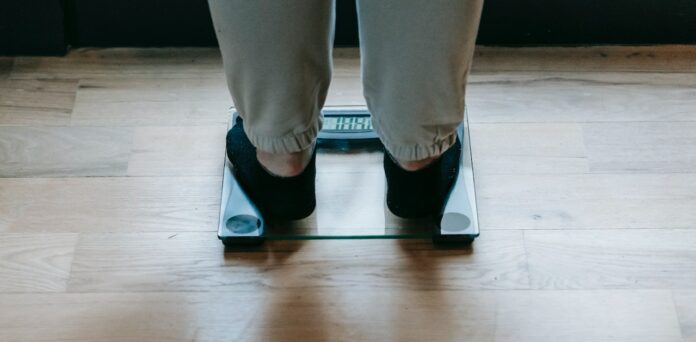You may have heard of testosterone replacement therapy (TRT) but not be sure what it is or how it works. This guide will give you a basic understanding of trt clinic near me, what it can do for you, and what the risks are.
Testosterone replacement therapy (TRT) is a medical treatment used to restore testosterone levels in men who have abnormally low testosterone, often caused by aging-related hormonal changes. It typically involves the use of artificial hormones such as topical gels or injections of synthetic testosterone. TRT can increase sex drive and physical performance, improve energy levels, and reduce the risk of developing certain diseases.
TRT is a highly effective treatment for men but carries some risks and side effects. Common side effects can include acne, increased risk of prostate cancer (if left untreated), mood swings, headaches, nausea, and breast enlargement. Some medications used to treat TRT can also cause liver damage, so it’s important to talk to your doctor before beginning any treatment.
What is TRT?
Testosterone replacement therapy is a medical treatment used to help men with low testosterone levels. Testosterone is a hormone that plays an important role in male development and sexual function. Low testosterone can cause problems with sexual function, mood, and muscle mass. TRT involves taking synthetic testosterone to bring your levels back up to normal.
How does TRT work?
There are several ways to deliver testosterone therapy, including injections, gels, patches, and implants. The most common method is an injection into the muscles every 7-14 days. The gel or patch is applied daily to the skin, and the implant is placed under the skin every 3-6 months.
What are the benefits of TRT?
TRT can improve sexual function, mood, and muscle mass in men with low testosterone levels. It can also help with other conditions such as fatigue and depression.
What are the risks of TRT?
The risks of TRT include acne, sleep apnea, enlarged breasts, shrunken testicles, and increased risk of heart attack or stroke. These risks are usually low when therapy is closely monitored by a doctor.
TRT is a medical treatment used to help men with low testosterone levels by delivering synthetic testosterone to bring their levels back up to normal. There are several ways to deliver testosterone therapy, including injections, gels, patches, and implants. TRT can improve sexual function, mood, and muscle mass in men with low testosterone levels but there are also some risks involved such as acne, sleep apnea, enlarged breasts, shrunken testicles, and increased risk of heart attack or stroke. Talk to your doctor if you think you might benefit from TRT.
Talk to your doctor if you think you might benefit from TRT. It is important to discuss the potential benefits and risks of testosterone therapy before starting any treatment. Your doctor will be able to recommend the best way to deliver TRT for you and can answer any questions or concerns that you may have. With the right care, TRT can help improve your quality of life and reduce symptoms associated with low testosterone levels.
Your doctor may also recommend certain lifestyle changes that could help improve testosterone levels, such as eating a healthy diet, exercising regularly, and reducing stress. In addition to those lifestyle modifications, your doctor may suggest specific supplements that could be beneficial for testosterone production. It is important to note that dietary supplements are not regulated by the FDA and should only be used with the advice of your doctor.
Testosterone replacement therapy (TRT) is a form of hormone replacement therapy used to increase the body’s testosterone levels. TRT works by introducing synthetic or natural hormones directly into the body, either through injections, gels, patches, or pills. It can also be done using implants that are surgically inserted beneath the skin.
The purpose of TRT is to restore the body’s natural balance of testosterone, as low levels have been linked with symptoms such as decreased energy, reduced libido, weight gain, and depression. Some people may also experience hair loss or erectile dysfunction due to low levels of testosterone. The effects of TRT can vary depending on the individual and the type of therapy used.
The most common form of TRT is known as testosterone replacement therapy (TRT). This involves injecting a synthetic hormone into the body to increase levels of testosterone. It works best when combined with lifestyle changes such as exercise, diet, and stress reduction. It can be administered in a variety of ways, including injections, gels, patches, and pills.
Before starting TRT it is important to discuss the potential risks and benefits with your doctor. While there are many positive outcomes associated with TRT, there are also some side effects that can occur from using this therapy. Common side effects include acne, pain at the injection site, and increased red blood cell count. Although rare, more serious side effects such as prostate cancer, stroke, and heart attack can occur with TRT.
If you’re considering TRT, it is important to find a qualified doctor who specializes in hormone replacement therapy. Look for a clinic that offers both natural and synthetic hormones, depending on your individual needs. When you come in for a consultation, the doctor will take a thorough medical history and discuss any symptoms or issues that may be related to low testosterone levels.
The doctor will then suggest the best type of replacement therapy for you. This could include pills, gels, creams, patches, or injections.
Before beginning any treatment for low testosterone, it is important to discuss all of the potential risks and benefits with your doctor. TRT can have side effects, some of which may be very serious if not monitored closely. With the right care and monitoring, however, TRT can help improve symptoms associated with low testosterone levels. Talk to your doctor today if you think you might benefit from TRT.











